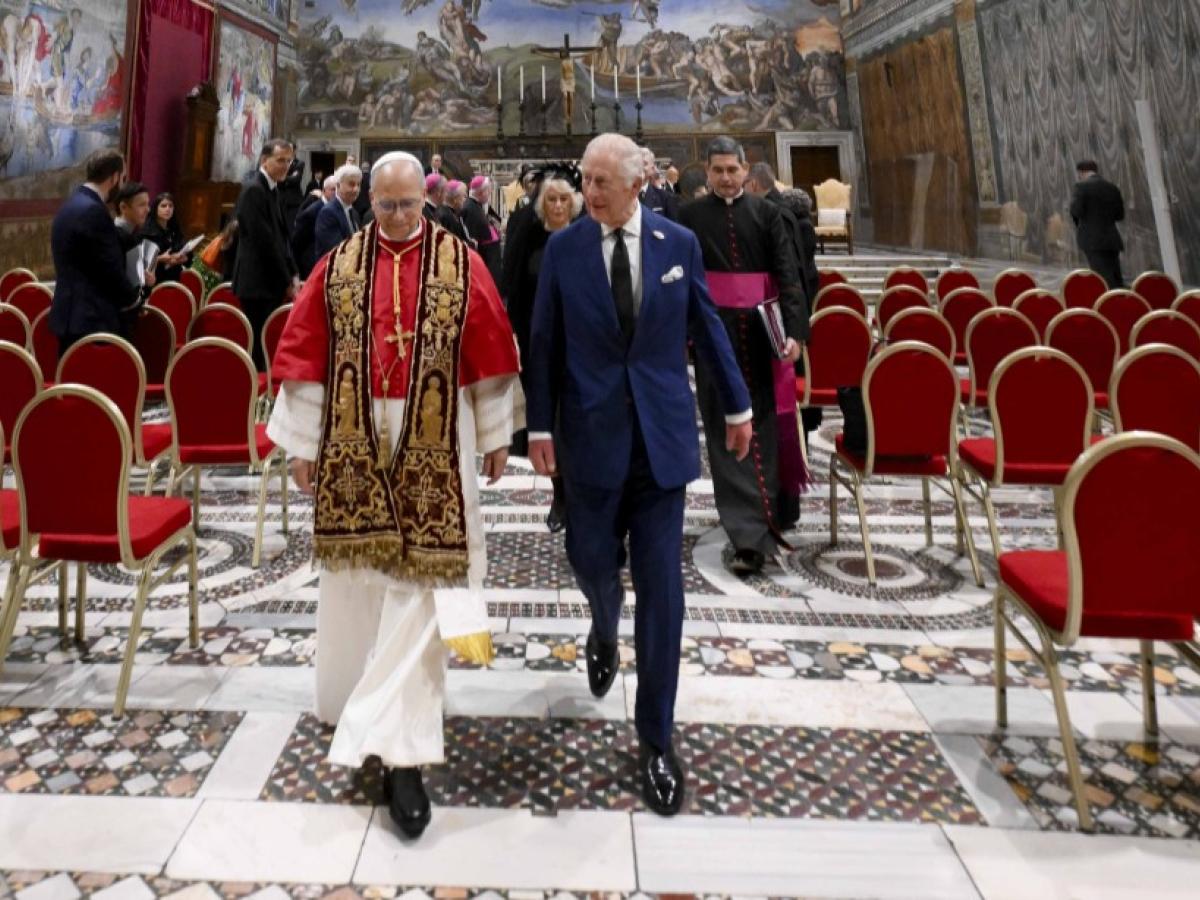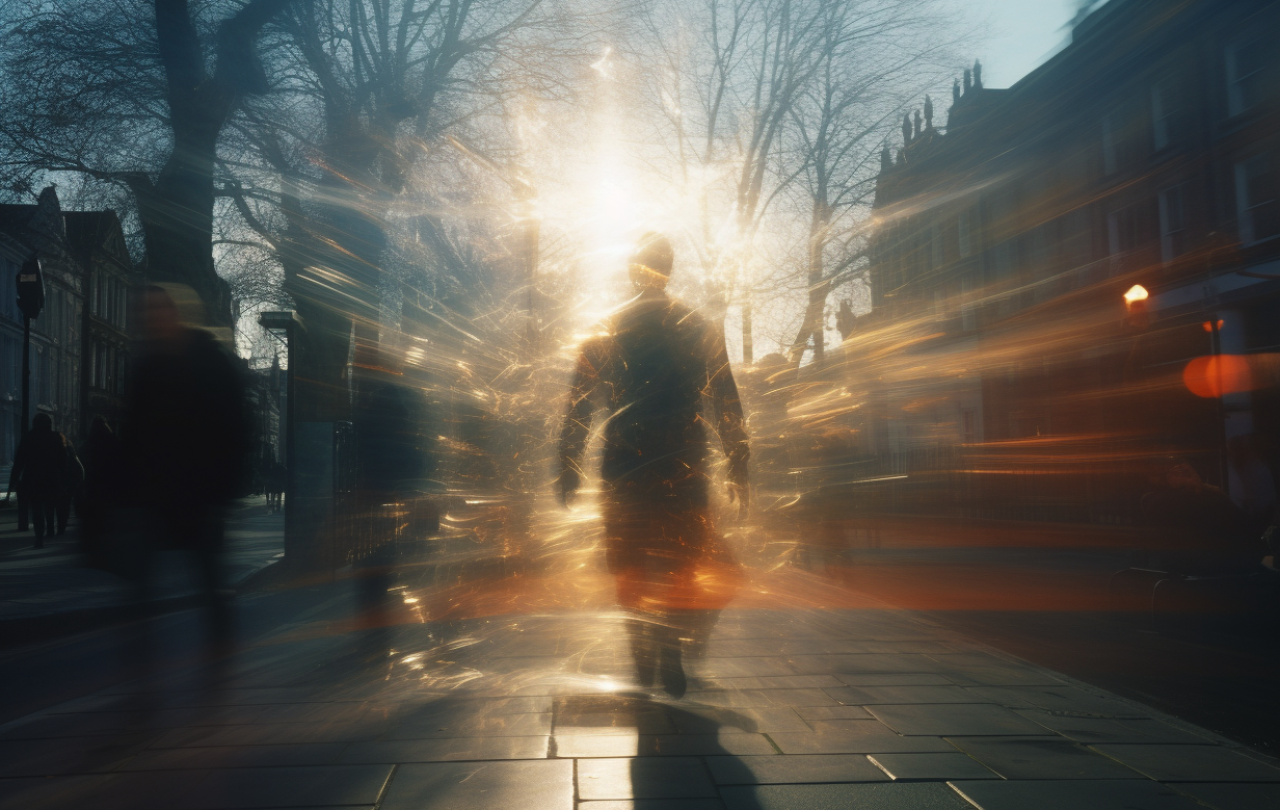
One afternoon in that week after the Queen died back in September, I spent a short while watching the live video footage from Westminster Hall of people filing past the Queen’s coffin as it lay in state. Ordinary members of the public, after their nine hour wait in the queue, stopped for their precious few seconds in front of the coffin before being ushered on to allow others to have their moment. It was clear that many of them were not quite sure what to do. Some just stood silently, but most felt they needed to do something. Some bowed or curtsied, others seemed to utter a quiet prayer, others crossed themselves in a slightly awkward fashion as if it was something they weren't really used to doing.
It was clear that people needed some kind of gesture of respect, and it was significant how many turned to some kind of religious action to do that, whether bowing a head, signing the cross or muttering a few words of prayer.
Throughout that week, at every turn, from the ceremony to recognise the new king, to the lying in state, to the funeral itself, everything seemed to happen in a context of Christian prayer. They were all deeply religious ceremonies and came in for surprising little resistance, despite our increasingly secular frame of mind as a nation. It was as if at that moment, in that difficult week, it felt as if the Christian faith held the nation’s grief for a short while.
Having taken many funerals in my time, I recognise the same dynamic in more ordinary circumstances. Many people who maybe have a dim recollection of Christian faith from their background find the rituals and ceremonies of the church - a hymn vaguely remembered from school, a vicar saying prayers, the rich and hopeful words of resurrection in the presence of death - a valuable handrail to hold onto at a time of deep instability and profound change.
It might seem that this outbreak of religious observance at the death of the monarch was just a temporary thing before life returned to normal, but perhaps it pointed to something much more significant.
It always feels a little odd with the beginnings of spring, daffodils and sprouting flowers in the garden, but Good Friday is the bleakest moment of the Christian year. It is the moment when we remember how, for Christians at least, the most complete human being who ever walked the planet, Jesus of Nazareth, was executed in a huge miscarriage of justice. If this really was the day we killed God, it was the darkest moment in human history.
And maybe that is part of the genius of Christianity – its ability to hold people in moments of grief and pain, when there aren’t easy answers to be found.
Good Friday is followed by Holy Saturday, the day when Jesus’ body lay still and decaying in a cold grave, and everything seemed to be at an end. Of course, we know that Resurrection and the joy of it was just around the corner, but they didn’t know that on the first Good Friday, and you have to go through Good Friday and even sit with the devastation of it all through Holy Saturday before you get to the joy. And maybe that is part of the genius of Christianity – its ability to hold people in moments of grief and pain, when there aren’t easy answers to be found.
Nick Cave’s recent book, co-authored with Sean O’Hagan, has as its title, not the traditional trio of Faith, Hope and Love, but Faith, Hope and Carnage. The book explores Cave’s re-discovery of faith in part through the tragic death of his 15-year old son Arthur, and the capacity of faith to hold and sustain him in the middle of carnage, despair and tragedy. As Rowan Williams put it in his recent interview with Nick Cave: “The book reveals the way in which faith, without ever giving a plain, comforting answer, offers resources to look at what is terrible without despair or evasion.”
The Christian understanding of evil is not that is it good dressed up in dowdy clothing. It does not tell us to believe that somehow premature death, cancer, or childhood leukaemia are somehow good for us. It says that they have no point because that is the nature of evil – that it is pointless. It has no meaning because it is the absence of meaning. It has no purpose because it is the absence of purpose.
That is why Christians gladly say they have no neat answer to the problem of evil. Because evil is the absence of answers. It is nonsense because it makes no sense. Instead, we believe, not because we have found an answer to the problem of suffering, but despite that fact that we haven’t. We believe because we have heard a more compelling story that does make sense of everything else - the unlikely and sometimes scarcely believable hope of Resurrection, which makes sense of so much else – even the mysterious rebirth of nature that emerges from the seeming death of winter into new life in the Spring. Only unlike pagans, Christians see the natural rhythms of the world as an echo of the central story of the Resurrection of Jesus, rather than the other way round.
Christians see in the events of the first Easter the turning point of history. That when we tried to kill God on the first Good Friday, he did not stay dead, but rose again, bringing with him the promise that those who face death or tragedy hand in hand with Christ, will somehow come through the carnage and the chaos with a life and a future.
When you’re in agony you don’t need an explanation, you just need someone to hold you.
Of course, when you’re in the middle of pain, it’s hard to see that. When you’re in agony you don’t need an explanation, you just need someone to hold you. And that’s exactly what Christianity offers – someone to hold you. Someone who has been through the worst that life and history can throw at him and knows the worst that can happen. It offers the presence of God in the Jesus who is no stranger to pain – as it says over and over again in the Bible “I will never leave you or forsake you.” It is, as Sian Brookes explains in her excellent review of the film Allelujah! on Seen & Unseen, what we will all need at the end of our lives - someone to be with us.
Christian faith still holds out the hope of Resurrection. Easter Sunday does come around after Good Friday. But even when you’re stuck on Saturday, waiting for a Sunday that never seems to come, when Resurrection is hard to believe in, when all around you is carnage and chaos, you are invited to hold tightly and determinedly to that mysterious presence that stands with you in the darkness, whether you feel it or you don’t, while you wait for the light to dawn.






